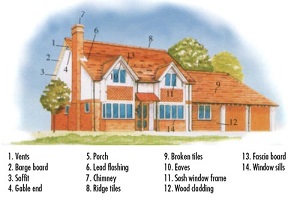 Minnesota is home to eight species of bats, one of which is protected by the Federal Endangered Species Act of 1973. Two others are being considered for protection. Five of the eight species have varying degrees of state level protection in Minnesota and Wisconsin. Only two of the eight species however (the large brown bat and the little brown myotis) are known to roost in residential dwellings. If you have bats that have taken up residence in your home, call the experts at Minnesota Wildlife Management to determine what kind of bats they are, and the best course of action for the safe and humane removal.
Minnesota is home to eight species of bats, one of which is protected by the Federal Endangered Species Act of 1973. Two others are being considered for protection. Five of the eight species have varying degrees of state level protection in Minnesota and Wisconsin. Only two of the eight species however (the large brown bat and the little brown myotis) are known to roost in residential dwellings. If you have bats that have taken up residence in your home, call the experts at Minnesota Wildlife Management to determine what kind of bats they are, and the best course of action for the safe and humane removal.
Unwelcome Guests A Nuisance
As nocturnal mammals, bats are most active at night, creating noise by flying in and out of the house late at night. More serious are the bacteria-laden organisms they carry. Bats spread these organisms mainly through their fecal matter and urine. As time progresses, excrement and urine will soak into floorboards and insulation and spread, causing sickness among family members. On top of everything else, bats also spread rabies.
Signs Of A Possible Bat Infestation
When bats invade homes, they do so silently, but not without clear indications of their presence. Given enough time, some, or all, of these clues will appear, confirming a potential infestation:
● Holes on the exterior of your house, stained around the edges with black resin
● High pitched squeaking sounds coming from your attic or walls
● The sound of something flying around in your attic, late at night
● A pungent odor of ammonia in the air
● Dead bats in areas around your home
Getting Rid Of Bats In The Home
Since bats feed on insects, poison is not likely to be a strong deterrent. In fact, in most states, it is illegal to poison bats because of the valuable role they play in the ecosystem. Once you are sure all the bats have left for the winter, wear protective clothing, gloves, goggles, and a respiratory mask, and seal off any holes using boards, caulk, and screening materials. Use an enzyme cleaner to get rid of the smell.
Prevention Tips
There is no easy way to prevent bats, but there are several things you can do to reduce your chances of an infestation. Performed during late fall, exclusion methods undertaken after bats have left structures in the winter can be quite effective. To prevent bats from taking over your attic, use mylar tape to prevent roosting in carports and chimneys. Mothballs, screens, bright lights, and ultrasonic sound machines are also somewhat effective in deterring bats.
Don’t let bats be a constant worry or source of fear for you and your family. Gain some peace of mind with our bat prevention services. For more information on Minnesota Wild Animal Management and the bat prevention services we offer in your area, give us a call today at (612) 386-1289.




